|
Réponse |
Message 1 de 84 de ce thème |
|
|
El mismo dia de JUDAS TADEO, Y EL MISMO DIA DEL EXPERIMENTO FILADELFIA
Statue of Liberty
The height of the Statue of Liberty is 111′-1″ from bottom of foot to top of head. The 7 rays on the crown and the 11 points of the base star echo the proportions of the Great Pyramid’s 7:11 height to base proportion. The superb book Talisman by Graham Hancock and Robert Bauval convincingly shows this goddess is actually the Egyptian Isis.

Image courtesy Elcobbola under the Creative Commons Attribution-Share Alike 3.0 Unported license.
http://www.viewzone.com/onstott66.html
Experimento Filadelfia
De Wikipedia, la enciclopedia libre
El Experimento Filadelfia, también llamado Proyecto Arcoíris, es el nombre que recibió un supuesto experimento secreto llevado a cabo por la marina estadounidense en los astilleros navales de Filadelfia, en el estado de Pensilvania, durante o antes del 28 de octubre de 1943. En el cual el destructor escolta de la Armada USS Eldridge al parecer fue invisibilizado (o "encubierto") electrónicamente contra los dispositivos enemigos. La marina de Estados Unidos comenta que ha buscado archivos que se refieran a este hecho y no los ha encontrado, ni ha encontrado evidencia de que se intentara.[cita requerida]
El incidente fue reportado repetidamente como una farsa.[1] [2] [3]
A finales de los años 30, el ingeniero eléctrico Nikola Tesla, afirmó[cita requerida] haber completado una teoría dinámica de la gravedad, que básicamente explica la gravedad como una mezcla de ondas electromagnéticas longitudinales y transversales. Estos razonamientos calaron hondo en un grupo de trabajo que experimentaba con los campos electromagnéticos en la Universidad de Chicago[cita requerida], donde se estaban iniciando las investigaciones sobre la posibilidad de la invisibilidad a través del uso de campos eléctricos y magnéticos. Este proyecto se habría trasladado en 1939 al Instituto de Estudios Avanzados de la Universidad de Princeton[cita requerida].
En un momento determinado, se afirmó haber conseguido la invisibilidad de pequeños objetos, con lo que se presentó al gobierno de los Estados Unidos.[cita requerida] Por lo que en el plano militar vieron el potencial de esta nueva tecnología y decidieron sufragar el curso de las investigaciones a fin de direccionarlas en el sentido que les convenía: su aplicación a la industria bélica. El USS Eldridge, es modificado para transportar toneladas de equipamiento electrónico, entre el que se incluirían dos enormes generadores de 75 kV cada uno, montados en el lugar que debería ocupar la torreta de cañones de proa, y que distribuían su potencia a través de cuatro bobinas montadas en cubierta. Tres transmisores RF de 2 megavatios cada uno, 3.000 tubos amplificadores 6L6 (empleados para canalizar los campos de las bobinas de los dos generadores), circuitos de sincronización y modulación... fueron empleados para generar campos electromagnéticos masivos que, correctamente configurados, serían capaces de curvar las ondas de luz y de radios alrededor del buque, haciéndolo invisible.
Las pruebas habrían empezado el verano de 1943, y hasta cierto punto tuvieron éxito al principio. Una prueba, el 22 de julio de 1943, volvió al USS Eldridge (DE-173) casi totalmente invisible, con algunos testigos reportando una "niebla verdosa" —sin embargo, algunos miembros de la tripulación se quejaron de náuseas posteriormente. En ese momento, el experimento fue alterado a petición de la Marina, con el objetivo de hacer al navío invisible a los radares únicamente.[cita requerida]
El equipo fue recalibrado y el experimento se llevó a cabo el 28 de octubre. Esta vez, el Eldridge no sólo se volvió totalmente invisible a la vista, sino que de hecho desapareció del área en un relámpago azul. Al mismo tiempo, la base naval estadounidense en Norfolk, Virginia, a 600 km de distancia, un tripulante en sus costas declaró haber visto al Eldridge durante 15 minutos, al final de los cuales desapareció, para volver a aparecer en Filadelfia, en sus coordenadas originales —supuestamente un caso accidental de teletransportación.[cita requerida]
Según el relato de Carlos Allende[cita requerida], los efectos fisiológicos en la tripulación fueron profundos. Mareos muy violentos, personal que desapareció por completo, otros que simplemente se volvieron locos o padecieron esquizofrenia severa, y lo más terrorífico fue el hallazgo de cinco miembros de la tripulación fundidos completamente con la estructura de metal de la proa del buque y otros tantos sufrieron desmaterializaciones de algunas partes de sus cuerpos. Supuestamente, los oficiales navales horrorizados cancelaron el experimento inmediatamente. Los supervivientes nunca fueron los mismos, y permanecieron en una suerte de amnesia total.[cita requerida]
Publicación de la historia[editar]
Los detalles de este experimento fueron revelados indirectamente.
Carl Allen/Carlos Allende[editar]
En 1955, K. Jessup, un astrónomo amateur, antes investigador postuniversitario, publicó The Case for the UFO, un examen del fenómeno del OVNI (UFO en inglés) en el que teorizaba los medios de propulsión que un platillo volador del estilo de un OVNI podría utilizar. Jessup especuló que la anti-gravedad o el electromagnetismo pueden ser responsables del comportamiento de vuelo observado en los OVNIs, y lamentó, tanto en el libro como en la publicidad del tour que siguió, que la investigación de los vuelos espaciales se concentrara en el área de los cohetes, y que se pusiera poca atención a otros medios teóricos de vuelo, que él consideraba rendirían más frutos al final.
El 13 de enero de 1956, Jessup recibió una carta de un hombre que se identificaba como "Carlos Miguel Allende". En ella, Allende informaba a Jessup del Experimento Filadelfia, aludiendo a artículos periodísticos de la época de fuentes dudosas como "prueba". Allende también decía haber sido testigo de la desaparición y reaparición del Eldridge mientras trabajaba en un barco mercante que se encontraba cerca, el SS Andrew Furuseth. Incluso mencionó los nombres de otros tripulantes del Andrew Furuseth, y decía saber del destino de algunos miembros de la tripulación del Eldridge tras el experimento, incluyendo uno que dice haber visto "desaparecer" durante una pelea en un bar. Jessup le respondió a Allende con una postal, pidiendo más evidencia y corroboración de la historia, tales como fechas y detalles específicos de la misma. La respuesta llegó varios meses más tarde; sin embargo, esta vez el hombre se identificaba como "Carl M. Allen". Allen dijo que no podría proveer los detalles pedidos por Jessup, pero insinuaba que podrían ser obtenidos a través de la hipnosis. Jessup decidió cortar la correspondencia.
EXPERIMENTO FILADELFIA=22 DE JULIO=DIA DE MARIA LA MAGDALENA
EXPERIMENTO FILADELFIA=22 DE JULIO=DIA DE MARIA LA MAGDALENA
EXPERIMENTO FILADELFIA=22 DE JULIO=DIA DE MARIA LA MAGDALENA
|
|
|
|
GENESIS
3:14 Y Jehová Dios dijo a la serpiente: Por cuanto esto hiciste, maldita serás entre todas las bestias y entre todos los animales del campo; sobre tu pecho andarás, y polvo comerás todos los días de tu vida.
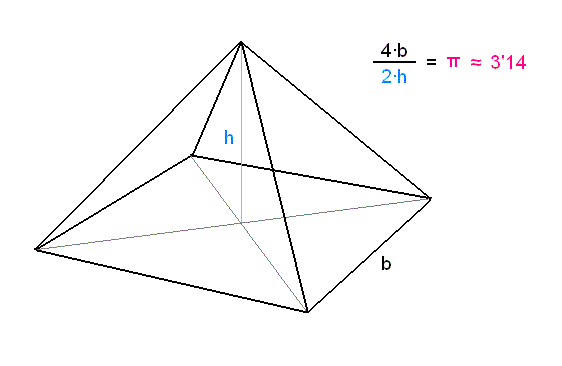 3:15 Y pondré enemistad entre ti y la mujer, y entre tu simiente y la simiente suya; ésta te herirá en la cabeza, y tú le herirás en el calcañar. 3:16 A la mujer dijo: Multiplicaré en gran manera los dolores en tus preñeces; con dolor darás a luz los hijos; y tu deseo será para tu marido, y él se enseñoreará de ti. 3:17 Y al hombre dijo: Por cuanto obedeciste a la voz de tu mujer, y comiste del árbol de que te mandé diciendo: No comerás de él; maldita será la tierra por tu causa; con dolor comerás de ella todos los días de tu vida. 3:18 Espinos y cardos te producirá, y comerás plantas del campo. 3:19 Con el sudor de tu rostro comerás el pan hasta que vuelvas a la tierra, porque de ella fuiste tomado; pues polvo eres, y al polvo volverás. 3:20 Y llamó Adán el nombre de su mujer, Eva, por cuanto ella era madre de todos los vivientes. 3:21 Y Jehová Dios hizo al hombre y a su mujer túnicas de pieles, y los vistió. 3:22 Y dijo Jehová Dios: He aquí el hombre es como uno de nosotros, sabiendo el bien y el mal; ahora, pues, que no alargue su mano, y tome también del árbol de la vida, y coma, y viva para siempre. 3:23 Y lo sacó Jehová del huerto del Edén, para que labrase la tierra de que fue tomado. 3:24 Echó, pues, fuera al hombre, y puso al oriente del huerto de Edén querubines, y una espada encendida que se revolvía por todos lados, para guardar el camino del árbol de la vida. 3:15 Y pondré enemistad entre ti y la mujer, y entre tu simiente y la simiente suya; ésta te herirá en la cabeza, y tú le herirás en el calcañar. 3:16 A la mujer dijo: Multiplicaré en gran manera los dolores en tus preñeces; con dolor darás a luz los hijos; y tu deseo será para tu marido, y él se enseñoreará de ti. 3:17 Y al hombre dijo: Por cuanto obedeciste a la voz de tu mujer, y comiste del árbol de que te mandé diciendo: No comerás de él; maldita será la tierra por tu causa; con dolor comerás de ella todos los días de tu vida. 3:18 Espinos y cardos te producirá, y comerás plantas del campo. 3:19 Con el sudor de tu rostro comerás el pan hasta que vuelvas a la tierra, porque de ella fuiste tomado; pues polvo eres, y al polvo volverás. 3:20 Y llamó Adán el nombre de su mujer, Eva, por cuanto ella era madre de todos los vivientes. 3:21 Y Jehová Dios hizo al hombre y a su mujer túnicas de pieles, y los vistió. 3:22 Y dijo Jehová Dios: He aquí el hombre es como uno de nosotros, sabiendo el bien y el mal; ahora, pues, que no alargue su mano, y tome también del árbol de la vida, y coma, y viva para siempre. 3:23 Y lo sacó Jehová del huerto del Edén, para que labrase la tierra de que fue tomado. 3:24 Echó, pues, fuera al hombre, y puso al oriente del huerto de Edén querubines, y una espada encendida que se revolvía por todos lados, para guardar el camino del árbol de la vida.JUAN 20
Juan 20
1. El primer día de la semana, María Magdalena fue de mañana, siendo aún oscuro, al sepulcro; y vio quitada la piedra del sepulcro.
2. Entonces corrió, y fue a Simón Pedro y al otro discípulo, aquel al que amaba Jesús, y les dijo: Se han llevado del sepulcro al Señor, y no sabemos dónde le han puesto.
3. Y salieron Pedro y el otro discípulo, y fueron al sepulcro.
4. Corrían los dos juntos; pero el otro discípulo corrió más aprisa que Pedro, y llegó primero al sepulcro.
5. Y bajándose a mirar, vio los lienzos puestos allí, pero no entró.
6. Luego llegó Simón Pedro tras él, y entró en el sepulcro, y vio los lienzos puestos allí,
7. y el sudario, que había estado sobre la cabeza de Jesús, no puesto con los lienzos, sino enrollado en un lugar aparte.
8. Entonces entró también el otro discípulo, que había venido primero al sepulcro; y vio, y creyó.
9. Porque aún no habían entendido la Escritura, que era necesario que él resucitase de los muertos.
10. Y volvieron los discípulos a los suyos.
11. Pero María estaba fuera llorando junto al sepulcro; y mientras lloraba, se inclinó para mirar dentro del sepulcro;
12. y vio a dos ángeles con vestiduras blancas, que estaban sentados el uno a la cabecera, y el otro a los pies, donde el cuerpo de Jesús había sido puesto. (LOS MISMOS ANGELES DE GENESIS 3:24 QUE CUSTODIABAN EL INGRESO AL ARBOL DE LA VIDA)
13. Y le dijeron: Mujer, ¿por qué lloras? Les dijo: Porque se han llevado a mi Señor, y no sé dónde le han puesto.
14. Cuando había dicho esto, se volvió, y vio a Jesús que estaba allí; mas no sabía que era Jesús.
15. Jesús le dijo: Mujer, ¿por qué lloras? ¿A quién buscas? Ella, pensando que era el hortelano, le dijo: Señor, si tú lo has llevado, dime dónde lo has puesto, y yo lo llevaré.
16. Jesús le dijo: ¡María! Volviéndose ella, le dijo: ¡Raboni! (que quiere decir, Maestro).
17. Jesús le dijo: No me toques, porque aún no he subido a mi Padre; mas ve a mis hermanos, y diles: Subo a mi Padre y a vuestro Padre, a mi Dios y a vuestro Dios.
18. Fue entonces María Magdalena para dar a los discípulos las nuevas de que había visto al Señor, y que él le había dicho estas cosas.
|
|
|
|
|
|
Réponse |
Message 55 de 84 de ce thème |
|



16. Génesis 49:27 Benjamín es lobo arrebatador; A la mañana comerá la presa, Y a la tarde repartirá los despojos.
169. Romanos 11:1 Digo, pues: ¿Ha desechado Dios a su pueblo? En ninguna manera. Porque también yo soy israelita, de la descendencia de Abraham, de la tribu de Benjamín. 170. Filipenses 3:5 circuncidado al octavo día, del linaje de Israel, de la tribu de Benjamín, hebreo de hebreos; en cuanto a la ley, fariseo;
PABLO, ESTA EN FUNCION A LA MISMA SANTA CENA, OSEA EL MISMO RELOJ.
JERUSALEN ESTABA EN LA TRIBU DE BENJAMIN, OSEA QUE ES OBVIO QUE LA NUEVA JERUSALEN ES PABLO MISMO
PABLO/PEQUEÑO/PERRO/LOBO/GUERRA/MARTE/GRIAL
PABLO ES UN TIPO DEL GRIAL MISMO
16. Génesis 49:27 Benjamín es lobo arrebatador; A la mañana comerá la presa, Y a la tarde repartirá los despojos.
169. Romanos 11:1 Digo, pues: ¿Ha desechado Dios a su pueblo? En ninguna manera. Porque también yo soy israelita, de la descendencia de Abraham, de la tribu de Benjamín. 170. Filipenses 3:5 circuncidado al octavo día, del linaje de Israel, de la tribu de Benjamín, hebreo de hebreos; en cuanto a la ley, fariseo;
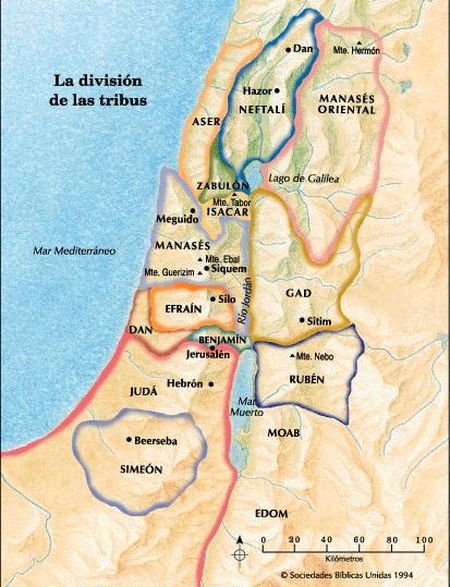 LAS DOCE TRIBUS DE ISRAEL LAS DOCE TRIBUS DE ISRAEL

13 HIJOS MAS DINA, LA UNICA HIJA MUJER
JABOB=ISRAEL=VENCEDOR

The classic logarithmic Golden Spiral

LLAVE DE ORO Y DE PLATA AL IGUAL QUE LA MANZANA
| milky way in Simple Gematria Equals: 119 |
( |
m 13 |
i9 |
l 12 |
k 11 |
y 25 |
0 |
w 23 |
a1 |
y 25 |
) |
| queen mary in Simple Gematria Equals: 119 |
( |
q 17 |
u 21 |
e5 |
e5 |
n 14 |
0 |
m 13 |
a1 |
r 18 |
y 25 |
|
| hebrew calendar in Simple Gematria Equals: 119 |
( |
h8 |
e5 |
b2 |
r 18 |
e5 |
w 23 |
0 |
c3 |
a1 |
l 12 |
e5 |
n 14 |
d4 |
a1 |
r 18 |
| mary magdalene in Simple Gematria Equals: 119 |
( |
m 13 |
a1 |
r 18 |
y 25 |
0 |
m 13 |
a1 |
g7 |
d4 |
a1 |
l 12 |
e5 |
n 14 |
e5 |
|

| milky way in Simple Gematria Equals: 119 |
( |
m 13 |
i9 |
l 12 |
k 11 |
y 25 |
0 |
w 23 |
a1 |
y 25 |
) |
| queen mary in Simple Gematria Equals: 119 |
( |
q 17 |
u 21 |
e5 |
e5 |
n 14 |
0 |
m 13 |
a1 |
r 18 |
y 25 |
|
| hebrew calendar in Simple Gematria Equals: 119 |
( |
h8 |
e5 |
b2 |
r 18 |
e5 |
w 23 |
0 |
c3 |
a1 |
l 12 |
e5 |
n 14 |
d4 |
a1 |
r 18 |
| mary magdalene in Simple Gematria Equals: 119 |
( |
m 13 |
a1 |
r 18 |
y 25 |
0 |
m 13 |
a1 |
g7 |
d4 |
a1 |
l 12 |
e5 |
n 14 |
e5 |
|
|
|
|
|
Réponse |
Message 56 de 84 de ce thème |
|
|
|
Hércules (constelación)
De Wikipedia, la enciclopedia libre
Recibe su nombre del héroe mitológico, Hércules y es la quinta en tamaño de las 88 constelaciones modernas. También era una de las 48 constelaciones de Ptolomeo.
[editar] Características destacables
No tiene estrellas de primera magnitud, siendo la más brillante β Herculis con magnitud 2,78. μ Herculis se encuentra a 27,4 años luz de la Tierra. El Ápex solar (punto del cielo que indica la dirección hacia la que se mueve el Sol en su órbitaalrededor del centro de la galaxia) se encuentra en Hércules, cerca de ξ Herculis.
[editar] Estrellas principales
- α Herculis (Ras Algethi o Rasalgethi), de magnitud 3,31, es un sistema estelar triple, cuya estrella principal es una gigante roja variable.
- β Herculis (Kornephoros), la más brillante de la constelación con magnitud 2,78, una estrella gigante amarilla.
- γ Herculis, gigante blanca de magnitud 3,74. Es una binaria espectroscópica con un período orbital de 11,9 días.
- δ Herculis (Sarin), estrella blanca de magnitud 3,12; es una estrella binaria cuyas componentes han sido resueltas por interferometría.
- ε Herculis, binaria espectroscópica de magnitud 3,91.
- ζ Herculis, la segunda más brillante de la constelación con magnitud 2,89, estrella doble formada por dos estrellas amarillas de desigual brillo.
- η Herculis, gigante amarilla de magnitud 3,49.
- θ Herculis, gigante luminosa naranja de magnitud 3,85.
- ι Herculis, subgigante azul de magnitud 3,79; tres estrellas más completan este sistema estelar cuádruple.
- κ Herculis A y κ Herculis B, dos gigantes que forman una doble óptica.
- λ Herculis (Maasym), gigante naranja de magnitud 4,40.
- μ Herculis, sistema estelar cercano que dista del Sistema Solar 27,4 años luz.
- π Herculis, gigante naranja de magnitud 3,16.
- ρ Herculis, estrella doble cuyas componentes, separadas 4 segundos de arco, brillan con magnitud 4,56 y 5,42.
- τ Herculis, estrella B pulsante lenta (SPB) con una tenue compañera a 7,6 segundos de arco.
- χ Herculis, enana amarilla de baja metalicidad que se encuentra a 52 años luz de distancia.
- ω Herculis (Kajam), de magnitud 4,57.
- 8 Herculis, estrella blanca de magnitud 6,13 que forma una doble óptica con Kappa Herculis —separación 0,2º—.
- 14 Herculis, enana naranja a 59,2 años luz con una enana marrón o planeta gigante alrededor. En 2006 se descubrió un posible segundo compañero, aún sin confirmar.
- 30 Herculis (g Herculis), gigante roja y variable semirregular cuyo brillo oscila entre magnitud 4,3 y 6,3 en un ciclo de 89,2 días.
- 68 Herculis (u Herculis), binaria eclipsante en donde existe transferencia de masa desde la secundaria hacia la primaria.
- 72 Herculis (w Herculis), enana amarilla similar al Sol a 47 años luz de distancia.
- 89 Herculis, supergigante amarilla en las etapas finales de su evolución estelar.
- 95 Herculis, estrella binaria compuesta por una gigante blanca y una gigante amarilla separadas 6,3 segundos de arco.
- 99 Herculis, binaria de baja metalicidad cuya primaria es una enana amarilla de magnitud 5,20.
- 101 Herculis, gigante blanca de magnitud 5,11.
- 109 Herculis, gigante naranja de magnitud 3,84, la duodécima estrella más brillante de la constelación.
- 111 Herculis, estrella blanca de magnitud 4,35.
- X Herculis, variable pulsante semirregular cuyo brillo varía entre magnitud 6 y 7 en un período de 95 días.
- SZ Herculis y FN Herculis, binarias eclipsantes de magnitud 9,94 y 11,08 respectivamente.
- UX Herculis, binaria eclipsante de magnitud 9,05; durante el eclipse principal su brillo disminuye 1,16 magnitudes.
- OP Herculis, gigante luminosa roja variable entre magnitud 5,85 y 6,73.
- HD 147506, subgigante amarilla en donde se ha detectado un planeta masivo (HAT-P-2b) en una órbita excéntricacercana a la estrella.
- HD 149026, estrella subgigante con un planeta cuya masa es similar a la de Saturno.
- HD 154345, enana amarilla a 58,91 años luz con un planeta extrasolar.
- Gliese 623, estrella binaria compuesta por dos enanas rojas.
- Gliese 686 y Gliese 649, enanas rojas a 26,5 y 33,7 años luz respectivamente; la segunda de ellas posee un planeta.
- HD 155358, estrella de baja metalicidad con dos planetas que interactúan gravitacionalmente.
- Gliese 638 y HR 6806, enanas naranjas situadas respectivamente a 31,9 y 36,2 años luz de distancia de la Tierra.
- GD 362, enana blanca con un anillo similar a los de Saturno.
- http://es.wikipedia.org/wiki/H%C3%A9rcules_(constelaci%C3%B3n)
  
ISLA SAN GIORGIO (VENECIA)=GEORGE LEMAITRE
GEMATRIA EN INGLES DE SEED=33
GEMATRIA EN INGLES DE GATE=33
SARA (CE-SAREA DE FILIPO)=PARALELO 33
"¡Oh profundidad de las riquezas de la sabiduría (sophia)
y de la ciencia (gnwsiV, gnosis) de Dios!
¡Cuán incomprensibles son sus juicios, e inescrutables sus caminos!"
(Romanos, 11: 33).
25 DE ABRIL=DIA DE SAN MARCOS
22 DE JULIO=DIA DE MARIA LA MAGDALENA
|
|
|
|
|
|
|
Réponse |
Message 57 de 84 de ce thème |
|
 
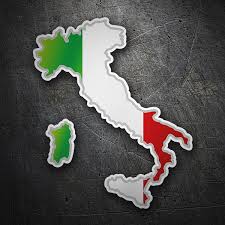  
Hércules (constelación)
De Wikipedia, la enciclopedia libre
Recibe su nombre del héroe mitológico, Hércules y es la quinta en tamaño de las 88 constelaciones modernas. También era una de las 48 constelaciones de Ptolomeo.
[editar] Características destacables
No tiene estrellas de primera magnitud, siendo la más brillante β Herculis con magnitud 2,78. μ Herculis se encuentra a 27,4 años luz de la Tierra. El Ápex solar (punto del cielo que indica la dirección hacia la que se mueve el Sol en su órbitaalrededor del centro de la galaxia) se encuentra en Hércules, cerca de ξ Herculis.
[editar] Estrellas principales
- α Herculis (Ras Algethi o Rasalgethi), de magnitud 3,31, es un sistema estelar triple, cuya estrella principal es una gigante roja variable.
- β Herculis (Kornephoros), la más brillante de la constelación con magnitud 2,78, una estrella gigante amarilla.
- γ Herculis, gigante blanca de magnitud 3,74. Es una binaria espectroscópica con un período orbital de 11,9 días.
- δ Herculis (Sarin), estrella blanca de magnitud 3,12; es una estrella binaria cuyas componentes han sido resueltas por interferometría.
- ε Herculis, binaria espectroscópica de magnitud 3,91.
- ζ Herculis, la segunda más brillante de la constelación con magnitud 2,89, estrella doble formada por dos estrellas amarillas de desigual brillo.
- η Herculis, gigante amarilla de magnitud 3,49.
- θ Herculis, gigante luminosa naranja de magnitud 3,85.
- ι Herculis, subgigante azul de magnitud 3,79; tres estrellas más completan este sistema estelar cuádruple.
- κ Herculis A y κ Herculis B, dos gigantes que forman una doble óptica.
- λ Herculis (Maasym), gigante naranja de magnitud 4,40.
- μ Herculis, sistema estelar cercano que dista del Sistema Solar 27,4 años luz.
- π Herculis, gigante naranja de magnitud 3,16.
- ρ Herculis, estrella doble cuyas componentes, separadas 4 segundos de arco, brillan con magnitud 4,56 y 5,42.
- τ Herculis, estrella B pulsante lenta (SPB) con una tenue compañera a 7,6 segundos de arco.
- χ Herculis, enana amarilla de baja metalicidad que se encuentra a 52 años luz de distancia.
- ω Herculis (Kajam), de magnitud 4,57.
- 8 Herculis, estrella blanca de magnitud 6,13 que forma una doble óptica con Kappa Herculis —separación 0,2º—.
- 14 Herculis, enana naranja a 59,2 años luz con una enana marrón o planeta gigante alrededor. En 2006 se descubrió un posible segundo compañero, aún sin confirmar.
- 30 Herculis (g Herculis), gigante roja y variable semirregular cuyo brillo oscila entre magnitud 4,3 y 6,3 en un ciclo de 89,2 días.
- 68 Herculis (u Herculis), binaria eclipsante en donde existe transferencia de masa desde la secundaria hacia la primaria.
- 72 Herculis (w Herculis), enana amarilla similar al Sol a 47 años luz de distancia.
  
ISLA SAN GIORGIO (VENECIA)=GEORGE LEMAITRE
GEMATRIA EN INGLES DE SEED=33
GEMATRIA EN INGLES DE GATE=33
SARA (CE-SAREA DE FILIPO)=PARALELO 33
"¡Oh profundidad de las riquezas de la sabiduría (sophia)
y de la ciencia (gnwsiV, gnosis) de Dios!
¡Cuán incomprensibles son sus juicios, e inescrutables sus caminos!"
(Romanos, 11: 33).
25 DE ABRIL=DIA DE SAN MARCOS
22 DE JULIO=DIA DE MARIA LA MAGDALENA
|
|
|
|
Réponse |
Message 58 de 84 de ce thème |
|


Sabemos que Vesica Piscis esta en funcion al a los 153 peces de Juan 21:11.
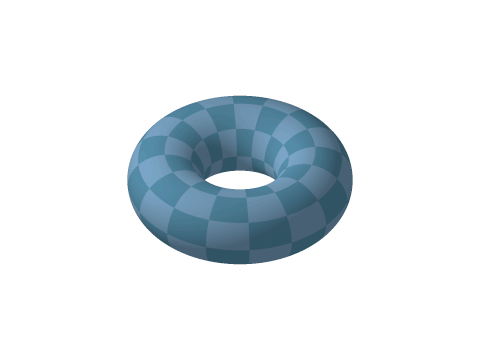 Aqui tenemos a Pi - la circunferencia del toro y la vesica piscis 256/153 equivalente a la raiz cuadrada de 3 En el hipercubo las coordinadas binarias de Piscis son decimal 3 y binario 11 153 los pescados de Jesus en la biblia   
I have a lot to say about pythagorean triangles in my videos. In particular I have found many references to 5:12:13 triangles and 5:12 rectangles (that’s 2 of the triangles put together) in Stonehenge and the whole region surrounding it, in Washington DC, Paris, and Jerusalem. Someone who listened to my first Red Ice interview contacted me with a major discovery he made in regards to the 5:12 proportion. Brace yourself…

A rectangle measuring 5 feet by 12 feet has an area of 8640 square inches. This is something I can work with. I’m never going to be able to build an 864 foot solar Osiris talisman on a geodetic hot spot, but I think I can manage making a few raised garden beds measuring exactly 5 by 12 feet. And where I live in Canada (above 50 degrees North) can really use more resonance with the Sun.
If you saw SIPS Volume 1, you might recall that Stonehenge has its station stones which describe a 5×12 rectangle.

from SIPS Volume 1
Stonehenge is also 33.33° from Solomon’s Temple.

Sapientia Aedificavit Sibi Domum. Es decir, "la sabiduría ha edificado aquí su casa". Resulta curioso que la misma frase aparece en el Evangelio de María Magdalena, un texto apócrifo. Se dice que en el interior de esta iglesia y de otras muchas de Venecia está escondido el tesoro de los templarios. Pero no hay ninguna prueba de ello. Para terminar ya con esta entrada me gustaría que nos acercásemos un momento a uno de los edificios más emblemáticos de Venecia: el Palacio Ducal.
|
|
|
|
Réponse |
Message 59 de 84 de ce thème |
|
|
|
|
Réponse |
Message 60 de 84 de ce thème |
|

|

LLAVE DE ORO Y DE PLATA AL IGUAL QUE LA MANZANA
Incendio Notre Dame: Última hora de la catedral de París (15 DE ABRIL)
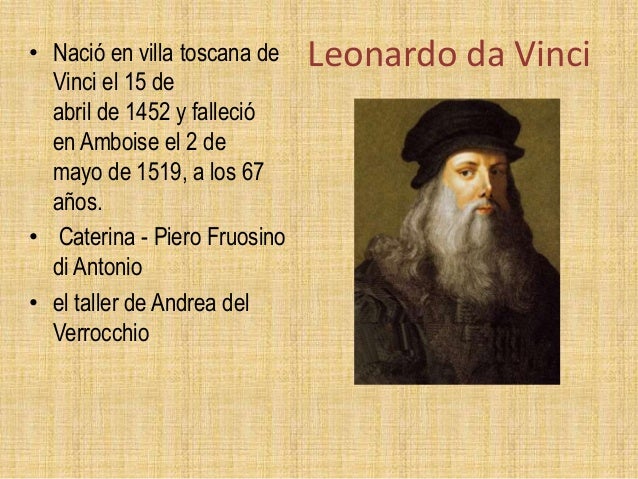
 Incendio Notre Dame (París), en directo (Bertrand Guay / AFP)
PHI A NOTRE-DAME
A la catredal de Notre Dame hi observem més rectanlges auris: Creat per Mario Pastor 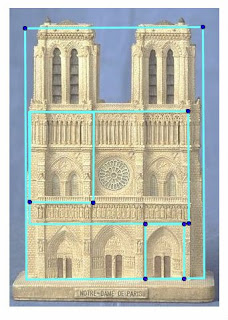
The DaVinci Code, Notre Dame Cathedral from DaVinci Code
original movie prop
 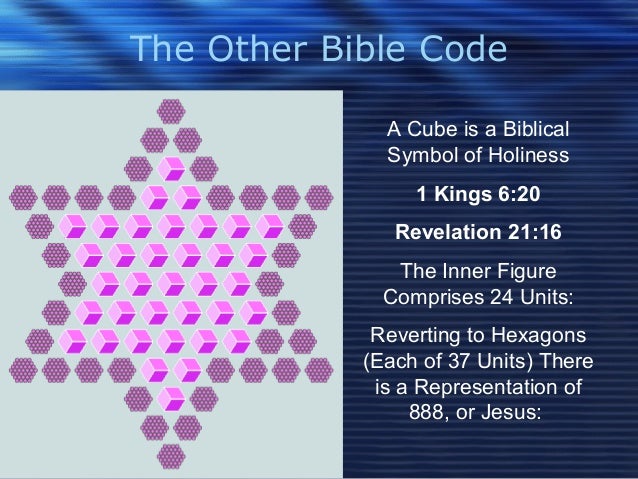
    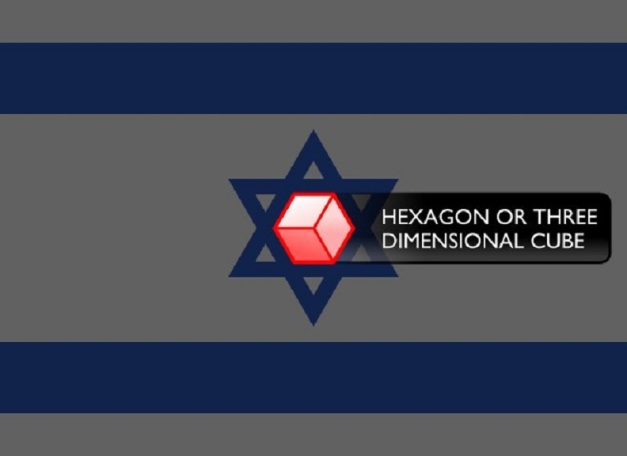   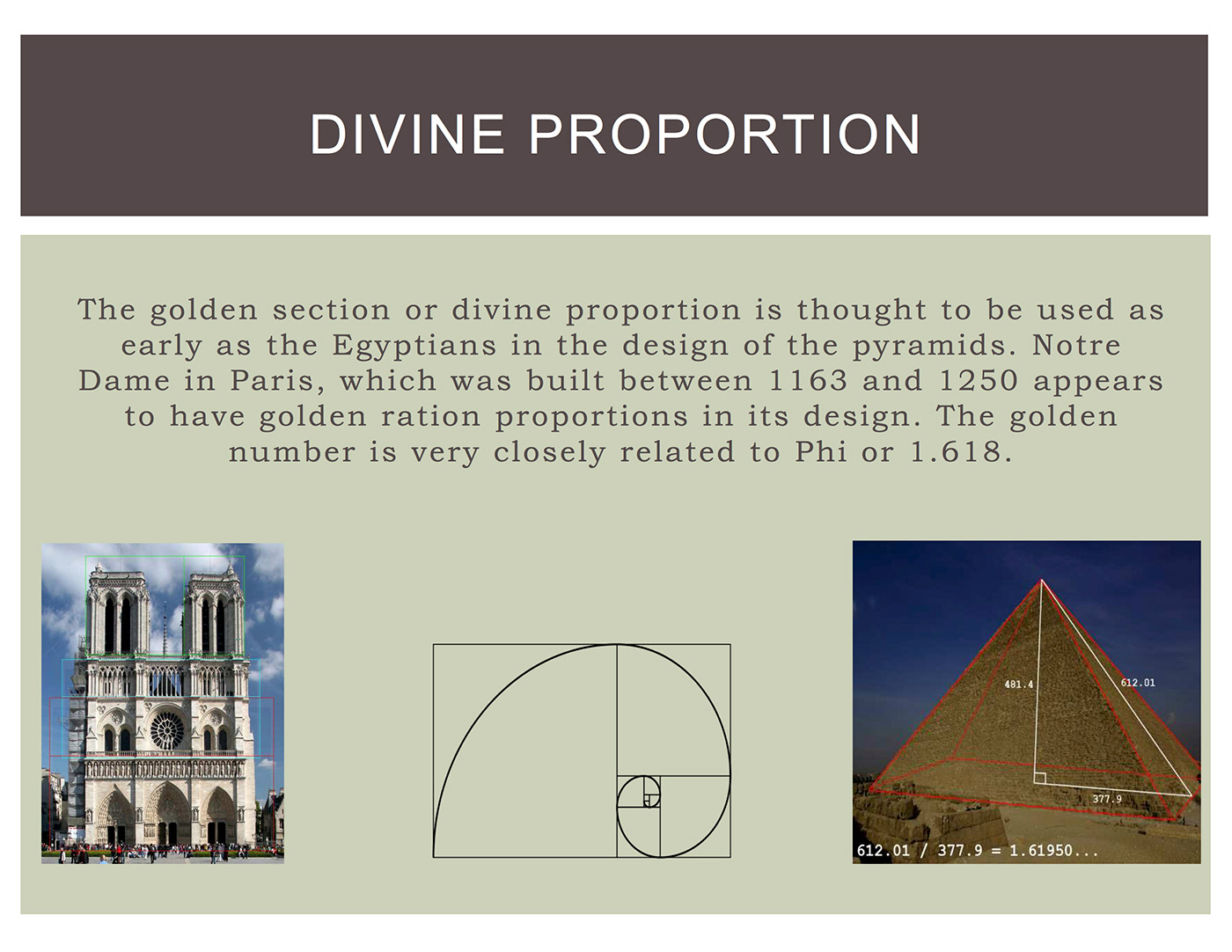 
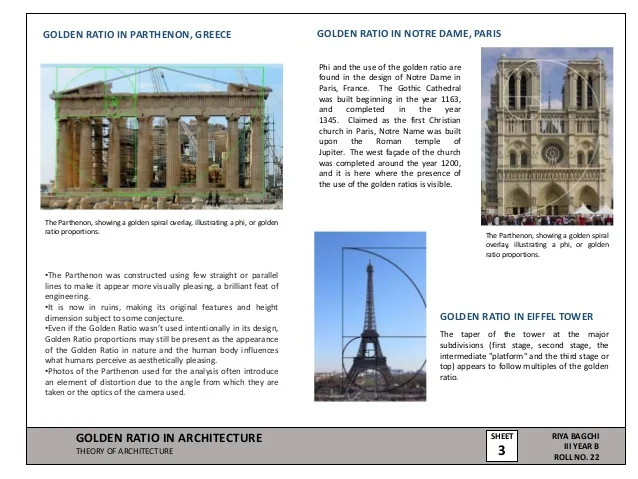
August 23, 2018/

The Golden Section (aka Golden Mean, and Golden Ratio) phys.org
We use math in architecture on a daily basis to solve problems. We use it to achieve both functional and aesthetic advantages. By applying math to our architectural designs through the use of the Golden Section and other mathematical principles, we can achieve harmony and balance. As you will see from some of the examples below, the application of mathematical principles can result in beautiful and long-lasting architecture which has passed the test of time.
Using Math in Architecture for Function and Form
We use math in architecture every day at our office. For example, we use math to calculate the area of a building site or office space. Math helps us to determine the volume of gravel or soil that is needed to fill a hole. We rely on math when designing safe building structures and bridges by calculating loads and spans. Math also helps us to determine the best material to use for a structure, such as wood, concrete, or steel.
“Without mathematics there is no art.” – Luca Pacioli, De divina proportione, 1509
Architects also use math when making aesthetic decisions. For instance, we use numbers to achieve attractive proportion and harmony. This may seem counter-intuitive, but architects routinely apply a combination of math, science, and art to create attractive and functional structures. One example of this is when we use math to achieve harmony and proportion by applying a well-known principle called the Golden Section
Math and Proportion – The Golden Section

Perfect proportions of the human body – The Vitruvian Man – by Leonardo da Vinci.
We tend to think of beauty as purely subjective, but that is not necessarily the case. There is a relationship between math and beauty. By applying math to our architectural designs through the use of the Golden Section and other mathematical principles, we can achieve harmony and balance.
The Golden Section is one example of a mathematical principle that is believed to result in pleasing proportions. It was mentioned in the works of the Greek mathematician Euclid, the father of geometry. Since the 4th century, artists and architects have applied the Golden Section to their work.
The Golden Section is a rectangular form that, when cut in half or doubled, results in the same proportion as the original form. The proportions are 1: the square root of 2 (1.414) It is one of many mathematical principles that architects use to bring beautiful proportion to their designs.
Examples of the Golden Section are found extensively in nature, including the human body. The influential author Vitruvius asserted that the best designs are based on the perfect proportions of the human body.
Over the years many well-known artists and architects, such as Leonardo da Vinci and Michelangelo, used the Golden Section to define the dimensions and proportions in their works. For example, you can see the Golden Section demonstrated in DaVinci’s painting Mona Lisa and his drawing Vitruvian Man.
Famous Buildings Influenced by Mathematical Principles
Here are some examples of famous buildings universally recognized for their beauty. We believe their architects used math and the principals of the Golden Section in their design:
Parthenon
The classical Doric columned Parthenon was built on the Acropolis between 447 and 432 BC. It was designed by the architects Iktinos and Kallikrates. The temple had two rooms to shelter a gold and ivory statue of the goddess Athena and her treasure. Visitors to the Parthenon viewed the statue and temple from the outside. The refined exterior is recognized for its proportional harmony which has influenced generations of designers. The pediment and frieze were decorated with sculpted scenes of Athena, the Gods, and heroes.

Parthenon Golden Section
Notre Dame Cathedral in Paris
Built on the Ile de la Cite, Notre Dame was built on the site of two earlier churches. The foundation stone was laid by Pope Alexander III in 1163. The stone building demonstrates various styles of architecture, due to the fact that construction occurred for over 300 years. It is predominantly French Gothic, but also has elements of Renaissance and Naturalism. The cathedral interior is 427 feet x 157 feet in plan. The two Gothic towers on the west façade are 223 feet high. They were intended to be crowned by spires, but the spires were never built. The cathedral is especially loved for its three stained glass rose windows and daring flying buttresses. During the Revolution, the building was extensively damaged and was saved from demolition by the emperor Napoleon.

Notre Dame Cathedral in Paris
Taj Mahal
Built in Agra between 1631 and 1648, the Taj Mahal is a white marble mausoleum designed by Ustad-Ahmad Lahori. This jewel of Indian architecture was built by Emperor Shah Jahan in memory of his favorite wife. Additional buildings and elements were completed in 1653. The square tomb is raised and is dramatically located at the end of a formal garden. On the interior, the tomb chamber is octagonal and is surrounded by hallways and four corner rooms. Building materials are brick and lime veneered with marble and sandstone.

Taj Mahal designed by Ustad-Ahmad Lahori
As you can see from the above examples, the application of mathematical principles can result in some pretty amazing architecture. The architects’ work reflects eye-catching harmony and balance. Although these buildings are all quite old, their designs have pleasing proportions which have truly passed the test of time.
https://bleckarchitects.com/math-in-architecture/
|
|
|
|
|
|
Réponse |
Message 61 de 84 de ce thème |
|
|
|
|
Réponse |
Message 62 de 84 de ce thème |
|
le, require a straining of the available evidence. Sometimes, it is more appropriate to simply accept that we just don’t know.
Put another way, if time past is a jigsaw puzzle and we only have a handful of pieces, we shouldn’t assume that the ones we do have fit together perfectly. That said, it would be cowardly not to at least to attempt to rearrange the pieces we do have about the witness who wrote the Gospel of John to see if they fit together in some other coherent way.
In our quest to establish the authorship of John’s Gospel we identified a number of possible candidates in the attempt to solve the Problem of John. We have considered and ruled out John the Apostle, John the Elder (a non-direct follower of Jesus) and the Johannine Community. As promised, I suggest a fourth: John Mark, described in Acts 13:5 as a hyperetai — in recognition of his qualification as a scribe or minister of the Word.
We know the following about John Mark from the New Testament:
- His mother Mary owns a large house in Jerusalem. This house plays host to “many believers” after the arrest of Peter (44AD); Acts 12:12
- He was a missionary with apostles Barnabus and Paul in Antioch, assisting as a scribe or minister of the Word; Acts 12:25
- After the trip to Pamphylia, he returns to Jerusalem (45AD); Acts 13:13
- His decision causes Barnabus and Paul to separate (49AD); Acts 15:37
- Barnabus and John Mark set sail together for Cyprus (49AD); Acts 15:39
- John Mark, Barnabus’ cousin, is with Paul in Rome and is anticipated to return to Asia Minor to minister there (60AD); Colossians 4:10
- John Mark is with Timothy in Ephesus (67AD); 2 Timothy 4:11
From these details, it is traditionally believed that John Mark:
- was a young man or adolescent at the time of Jesus’ death;
- was younger in relation to the Apostles Peter, James and John, Paul and Barnabus;
- was part of a family who had a large house in central Jerusalem that likely hosted the Last Supper;
- his family having wealth, he was likely trained as a Jewish scholar, and so would be more likely known amongst the Council of Jerusalem.
Of the four inferences drawn above, the first two are almost certain, and the second two are reasonable, if not conclusive, assumptions.
So, does John Mark fit the profile of the internal evidence — the information we have from the Bible about the first hand eye-witness author of the Fourth Gospel — we have already considered?
- Present with Jesus at the Last Supper;
- Likely to be known to the High Priest;
- Aware of the involvement of Nicodemus in Jesus’ burial;
- Able to outrun Peter to the tomb, but hesitant about entering.
The answer is Yes; or at the very least, he is a better fit than John the Apostle.
Why? Whilst both John Mark and John the Apostle were likely present with Jesus at the Last Supper, it is more probable that a wealthy young Jewish resident of Jerusalem knew the High Priest and was aware of the secretive actions of Nicodemus, one of the senior members of the Sanhedrin council, than a rough Galilean fisherman only in town for the Passover feast.
Turning to the external evidence — the non-biblical sources we have already looked at who comment about the author of the Fourth Gospel — does John Mark fit the profile?
- Named as John in Ephesus along with Paul and Timothy; Ignatius
- Named as John, a disciple of the Lord; Papias
- Named as John, the author of a Gospel at Ephesus; Irenaeus
- Lived in Ephesus at least until Trajan (98AD) as “a true witness of the tradition of the apostles”; and named as John, witness and teacher, who died in Ephesus; Polycrates
Also Yes. John Mark is again a better fit, than John, Son of Zebedee. Both Ignatius and Irenaeus identify the gospel author John alongside Paul and Timothy whilst in Ephesus. This fits perfectly with the last letter we have from Paul, his 2nd letter to Timothy, in which he writes asking to send John Mark from Ephesus.
As a younger man than John the Apostle, he is more likely to have survived until the time of the Roman Emperor Trajan in 98AD. This would still have made him an incredible 75 or so years old.
It is also more plausible that it was John Mark, as a much younger man, who felt at ease in “leaning back against Jesus” and, when prompted by Peter about the betrayal, naïvely asked “Lord, who is it?” as opposed to the comparatively older John the Apostle.
Further, it is much more likely that it was John Mark who remained in his home town of Jerusalem during the arrest, trial and crucifixion of Jesus, in comparison with the Twelve who, apart from Peter, apparently fled after Jesus’ betrayal in Gethsemane.
You might also consider it far more likely that it was John Mark who outran Peter to the tomb on the third day, but hung back from entering first, either in youthful hesitation or as a mark of respect for his elder, rather than the man nicknamed a Son of Thunder.
On balance, the natural conclusion is that the Beloved Disciple, “the disciple whom Jesus loved” was actually John Mark; and not, as tradition maintains, John the Apostle, Son of Zebedee.
Having journeyed from the foothills of the Himalayas we have nearly reached base camp. One more turn and, all being well, we should have established the historical likelihood of Jesus’ encounter with Pilate.
https://www.whatistruthbook.com/beloved-disciple-john-mark |
|
|
|
Réponse |
Message 63 de 84 de ce thème |
|
|
|
|
Réponse |
Message 64 de 84 de ce thème |
|
|
|
|
Réponse |
Message 65 de 84 de ce thème |
|
BABILONIA LA RAMERA ES UNA MUJER Y ES LA MISMA BESTIA
BABILONIA LA RAMERA ES UNA MUJER Y ES LA MISMA BESTIA
PARA NO CREER PERO ESTO ES ASI. LA RELACION DEL DINERO / MONEY / MOON / CON LA LUNA EN EL CONTEXTO A LA TRANSFIGURACION EN EL MONTE HERMON / MON / LUNA EN LA TRIBU DE DAN / DINERO / SERPIENTE. TODO ES UN NEXO CON LA TRANSFIGURACION DEL SEÑOR. DINERO ES TIEMPO MISMO.
ES OBVIO EL NEXO DE LA SERPIENTE CON LA MUJER
NOTEN EL NEXO DE DAN, CON LA SERPIENTE (VENECIA) Y EL CABALLO (PLAZA SAN MARCOS)
7. Génesis 49:17 Será Dan SERPIENTE junto al camino, Víbora junto a la senda, Que muerde los talones del caballo, Y hace caer hacia atrás al jinete.
 1200 1200
|
|
|
|
Réponse |
Message 66 de 84 de ce thème |
|
|
|
|
Réponse |
Message 67 de 84 de ce thème |
|
27 mar. 2017 - Subido por Canal Liberal Artifex
Conferencia del economista libertario argentino Javier Milei, en el año 2016. SINGULARIDAD: LOS AGUJEROS ...
19 abr. 2017 - Subido por Canal Liberal Artifex
Conferencia del economista libertario argentino Javier Milei, en el año 2014. CRECIMIENTO, CONVERGENCIA ...
24 oct. 2015 - Subido por Canal CREA
Lic. Javier Milei. ... 001 - Desafíos económicos de cara a la singularidad. Canal CREA. Loading... Unsubscribe ...
17 sept. 2015 - Subido por Fundación Atlas para una Sociedad Libre
AtlasTV: Javier Milei "Populismo salvaje" ... SINGULARIDAD EN ECONOMIA prof JAVIER MILEI ...
8 abr. 2015 - Subido por Fabio gorosito wales
SINGULARIDAD EN ECONOMIA prof JAVIER MILEI Programa TOTAL POLITIK de CARLOS MASLATON ...
5 ago. 2015 - Subido por Fundación Atlas para una Sociedad Libre
Javier Milei - Keynesianismo argentino y catástrofe populista. Fundación Atlas para una Sociedad Libre. Loading ...
|
|
|
|
Réponse |
Message 68 de 84 de ce thème |
|
27 mar. 2017 - Subido por Canal Liberal Artifex
Conferencia del economista libertario argentino Javier Milei, en el año 2016. SINGULARIDAD: LOS AGUJEROS ...
19 abr. 2017 - Subido por Canal Liberal Artifex
Conferencia del economista libertario argentino Javier Milei, en el año 2014. CRECIMIENTO, CONVERGENCIA ...
24 oct. 2015 - Subido por Canal CREA
Lic. Javier Milei. ... 001 - Desafíos económicos de cara a la singularidad. Canal CREA. Loading... Unsubscribe ...
17 sept. 2015 - Subido por Fundación Atlas para una Sociedad Libre
AtlasTV: Javier Milei "Populismo salvaje" ... SINGULARIDAD EN ECONOMIA prof JAVIER MILEI ...
8 abr. 2015 - Subido por Fabio gorosito wales
SINGULARIDAD EN ECONOMIA prof JAVIER MILEI Programa TOTAL POLITIK de CARLOS MASLATON ...
5 ago. 2015 - Subido por Fundación Atlas para una Sociedad Libre
Javier Milei - Keynesianismo argentino y catástrofe populista. Fundación Atlas para una Sociedad Libre. Loading ...
|
|
|
|
Réponse |
Message 69 de 84 de ce thème |
|
|
|
 Premier Premier
 Précédent
55 a 69 de 84
Suivant Précédent
55 a 69 de 84
Suivant Dernier
Dernier
|

